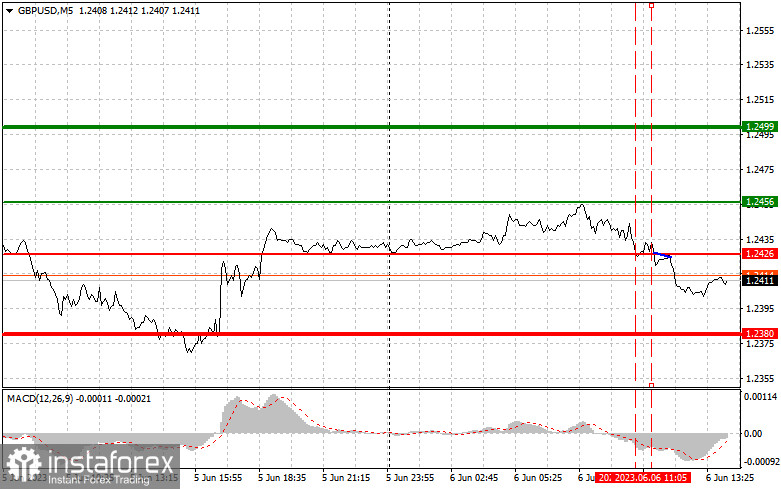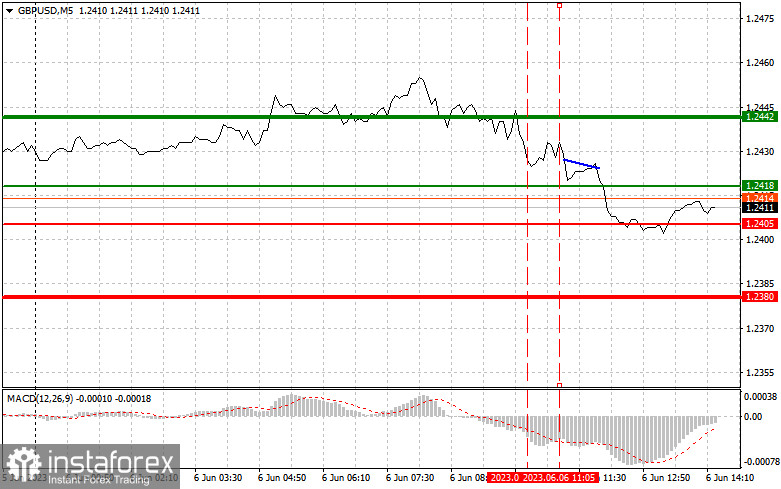The first test of 1.2426, coinciding with the significant decline of the MACD line from zero, left a buy signal in GBP/USD. However, an increase did not occur in the pair even after the second price test, during which the MACD lay in the oversold area.

Mediocre data on UK construction activity halted the rally in pound, resulting in a quick drop in GBP/USD's rate. However, the empty economic calendar in the US today could revamp risk appetite, thus leading to a rise in the pair.
For long positions:
Buy when pound hits 1.2418 (green line on the chart) and take profit at the price of 1.2442 (thicker green line on the chart). Growth could occur due to the empty economic calendar in the US. However, before buying, traders should make sure that the MACD line lies above zero or rises from it. Pound can also be bought after two consecutive price tests of 1.2405, but the MACD line should be in the oversold area as only by that will the market reverse to 1.2418 and 1.2442.
For short positions:
Sell when pound reaches 1.2405 (red line on the chart) and take profit at the price of 1.2380. Pressure will return in the case of inactivity around 1.2418. However, when selling, traders should make sure that the MACD line lies below zero or drops down from it. Pound can also be sold after two consecutive price tests of 1.2418, but the MACD line should be in the overbought area as only by that will the market reverse to 1.2405 and 1.2380.

What's on the chart:
Thin green line - entry price at which you can buy GBP/USD
Thick green line - estimated price where you can set Take-Profit (TP) or manually fix profits, as further growth above this level is unlikely.
Thin red line - entry price at which you can sell GBP/USD
Thick red line - estimated price where you can set Take-Profit (TP) or manually fix profits, as further decline below this level is unlikely.
MACD line- it is important to be guided by overbought and oversold areas when entering the market
Important: Novice traders need to be very careful when making decisions about entering the market. Before the release of important reports, it is best to stay out of the market to avoid being caught in sharp fluctuations in the rate. If you decide to trade during the release of news, then always place stop orders to minimize losses. Without placing stop orders, you can very quickly lose your entire deposit, especially if you do not use money management and trade large volumes.
And remember that for successful trading, you need to have a clear trading plan. Spontaneous trading decision based on the current market situation is an inherently losing strategy for an intraday trader.
 English
English 
 Русский
Русский Bahasa Indonesia
Bahasa Indonesia Bahasa Malay
Bahasa Malay ไทย
ไทย Español
Español Deutsch
Deutsch Български
Български Français
Français Tiếng Việt
Tiếng Việt 中文
中文 বাংলা
বাংলা हिन्दी
हिन्दी Čeština
Čeština Українська
Українська Română
Română

